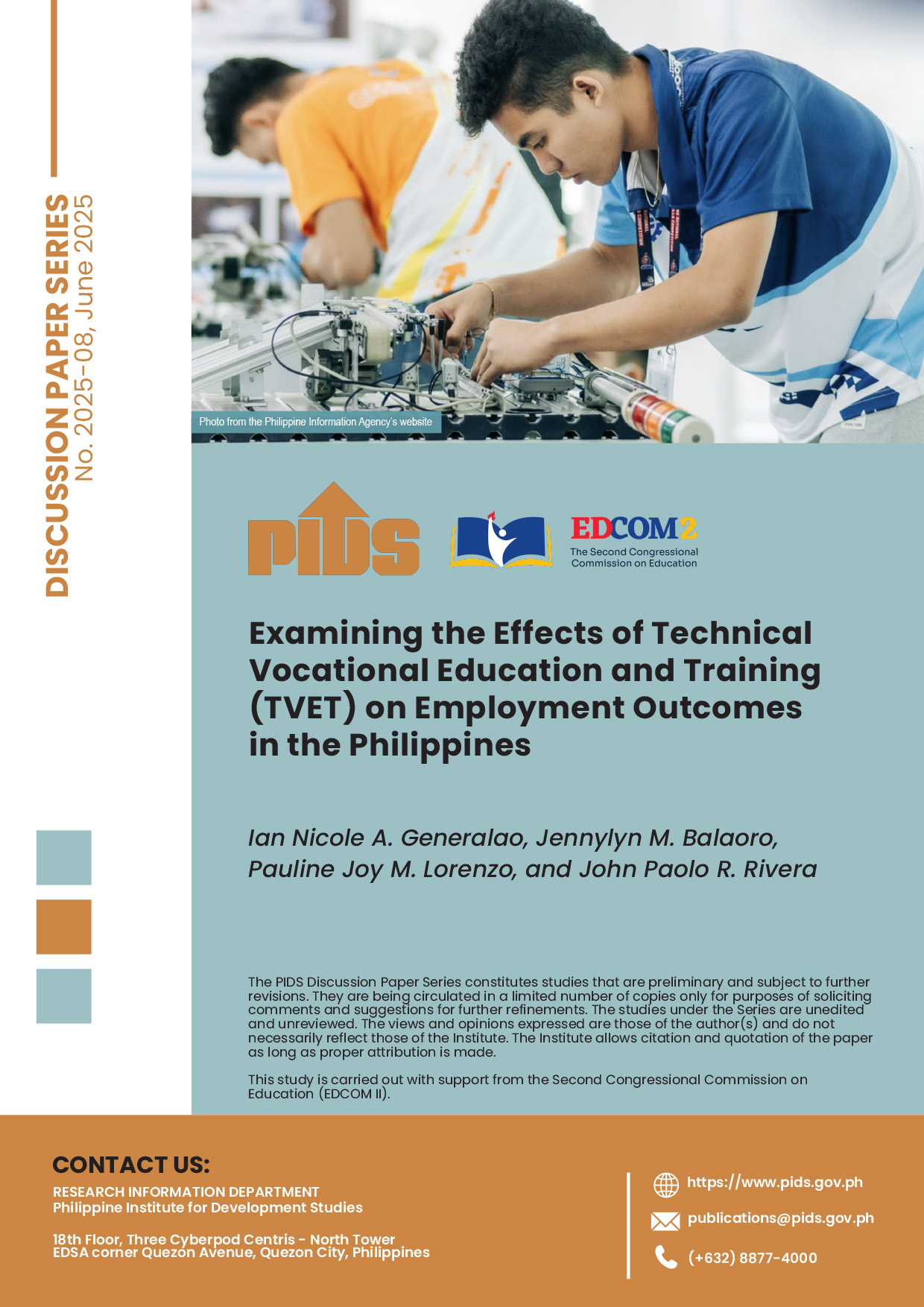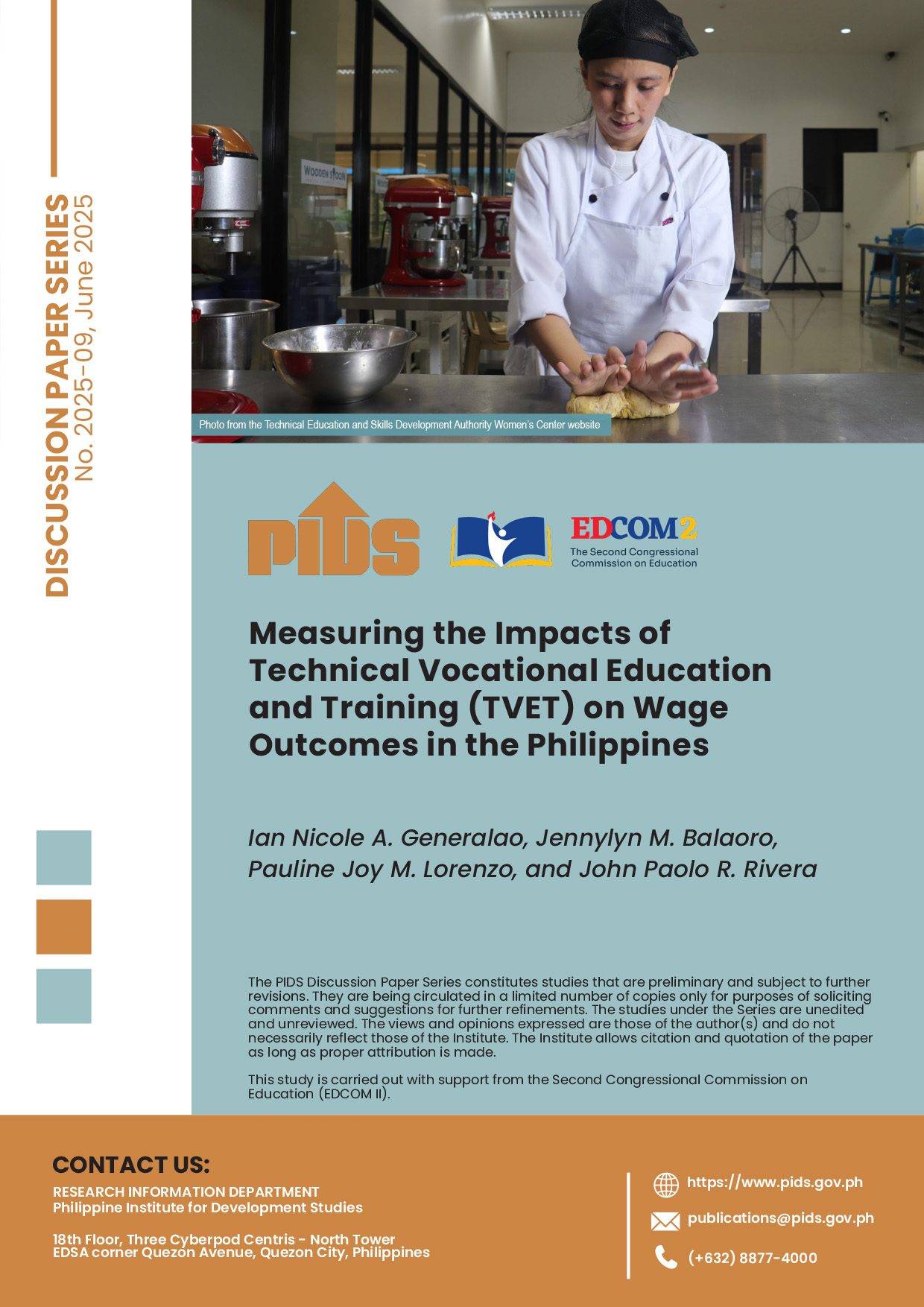Less than 50 percent of sustainable employment targets in Calamba, Laguna, Batangas, Rizal, Quezon (Calabarzon) and the Autonomous Region of Muslim Mindanao (ARMM) under the Conditional Cash Transfer (CCT) employment program have been met, according to a study by the Philippine Institute for Development Studies (PIDS).
In the discussion paper, PIDS researchers said that only 39 percent of CCT families have been served under Sustainable Livelihood Program (SLP) in Calabarzon and only 19 percent in ARMM.
There were a total of 17,547 families of the 45,162 families targeted in Calabarzon and 7,998 families out of the 42,485 target families in ARMM that benefited from SLP.
“The SLP is a social program of the Department of Social Welfare and Development [DSWD] for families and communities. It is currently being developed as the graduation program for beneficiaries of the Pantawid Pamilyang Pilipino Program [4Ps],” the paper explained.
As of December 2015, around 22 percent of the total number of families enroled in the 4Ps as of August 26, 2015, have been served by the program.
In a number of regions, more than 100 percent of the physical target had been covered in 11 regions nationwide and, apart from Calabarzon and ARMM, there were four other regions where below 100 percent of the target families were served under the SLP.
Regions that exceeded 100 percent were Regions 1 or Ilocos; Region 2 or Cagayan Valley; Region 3 or Central Luzon; Region 5 or Bicol; Region 6 or Western Visayas; Region 9 or Zamboanga Peninsula; Region 10 or Northern Mindanao; Region 11 or Davao; Region 12 or Soccsksargen; Caraga region; and the National Capital Region.
Apart from Calabarzon and ARMM, the regions that had lower than 100 percent of 4P families served under the SLP are the Cordillera Autonomous Region, Mimaropa, Central Visayas and Eastern Visayas.
“There is also need for the DSWD and Development to reassess its role in employment facilitation and to effectively link the 4Ps to other labor employment programs of government,” the PIDS paper stated.
The SLP, which was initiated in January 2011, offers two tracks to its target beneficiaries: (1) the Microenterprise Development (MD) track and the (2) Employment Facilitation (EF) track.
The MD Track uses the microcredit scheme of the old Self-Employment Assistant-Kaunlaran (SEA-K) Program, wherein participants are provided assistance in the establishment and expansion of their microenterprise.
The EF Track which had not been available in the old SEA-K Program, meanwhile, facilitates the employment of participants through job matching and skills trainings.
Data showed that out of the 963,978 4Ps families served in the SLP, 86 percent or 830,638 4Ps families have been served through the MD Track while only 14 percent or 133,340 4Ps families have been served through the EF Track.
The paper also stated that regions VI and VIII have the highest number of 4Ps families served in the EF Track at 26,308 and 23,456 families, respectively.
“Participation in either or both of the two SLP tracks would link the 4Ps families to income-generating opportunities to enable them to sustain their economic development and thus transition from survival to self-sufficiency,” the paper stated.
The paper titled Assessment of the Sustainable Livelihood Program—Employment Facilitation Process was led by Pids Research Fellow Marife Ballesteros.
The team also included researchers Tatum Ramos, Jasmine Magtibay, Aniceto Orbeta, Gerald Daval-Santos, Ann Jillian Adona, and Kathrina Gonzales.//
In the discussion paper, PIDS researchers said that only 39 percent of CCT families have been served under Sustainable Livelihood Program (SLP) in Calabarzon and only 19 percent in ARMM.
There were a total of 17,547 families of the 45,162 families targeted in Calabarzon and 7,998 families out of the 42,485 target families in ARMM that benefited from SLP.
“The SLP is a social program of the Department of Social Welfare and Development [DSWD] for families and communities. It is currently being developed as the graduation program for beneficiaries of the Pantawid Pamilyang Pilipino Program [4Ps],” the paper explained.
As of December 2015, around 22 percent of the total number of families enroled in the 4Ps as of August 26, 2015, have been served by the program.
In a number of regions, more than 100 percent of the physical target had been covered in 11 regions nationwide and, apart from Calabarzon and ARMM, there were four other regions where below 100 percent of the target families were served under the SLP.
Regions that exceeded 100 percent were Regions 1 or Ilocos; Region 2 or Cagayan Valley; Region 3 or Central Luzon; Region 5 or Bicol; Region 6 or Western Visayas; Region 9 or Zamboanga Peninsula; Region 10 or Northern Mindanao; Region 11 or Davao; Region 12 or Soccsksargen; Caraga region; and the National Capital Region.
Apart from Calabarzon and ARMM, the regions that had lower than 100 percent of 4P families served under the SLP are the Cordillera Autonomous Region, Mimaropa, Central Visayas and Eastern Visayas.
“There is also need for the DSWD and Development to reassess its role in employment facilitation and to effectively link the 4Ps to other labor employment programs of government,” the PIDS paper stated.
The SLP, which was initiated in January 2011, offers two tracks to its target beneficiaries: (1) the Microenterprise Development (MD) track and the (2) Employment Facilitation (EF) track.
The MD Track uses the microcredit scheme of the old Self-Employment Assistant-Kaunlaran (SEA-K) Program, wherein participants are provided assistance in the establishment and expansion of their microenterprise.
The EF Track which had not been available in the old SEA-K Program, meanwhile, facilitates the employment of participants through job matching and skills trainings.
Data showed that out of the 963,978 4Ps families served in the SLP, 86 percent or 830,638 4Ps families have been served through the MD Track while only 14 percent or 133,340 4Ps families have been served through the EF Track.
The paper also stated that regions VI and VIII have the highest number of 4Ps families served in the EF Track at 26,308 and 23,456 families, respectively.
“Participation in either or both of the two SLP tracks would link the 4Ps families to income-generating opportunities to enable them to sustain their economic development and thus transition from survival to self-sufficiency,” the paper stated.
The paper titled Assessment of the Sustainable Livelihood Program—Employment Facilitation Process was led by Pids Research Fellow Marife Ballesteros.
The team also included researchers Tatum Ramos, Jasmine Magtibay, Aniceto Orbeta, Gerald Daval-Santos, Ann Jillian Adona, and Kathrina Gonzales.//











